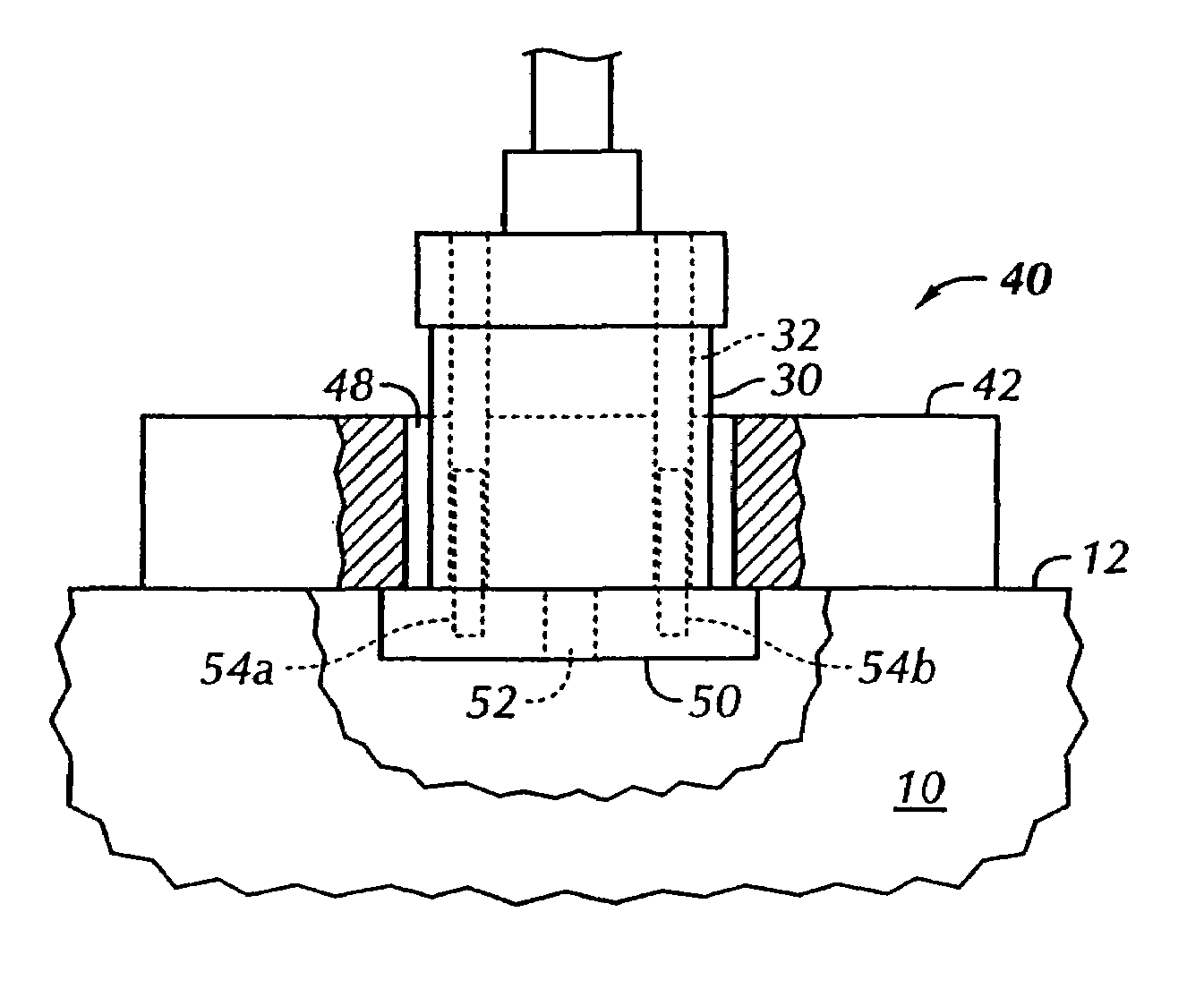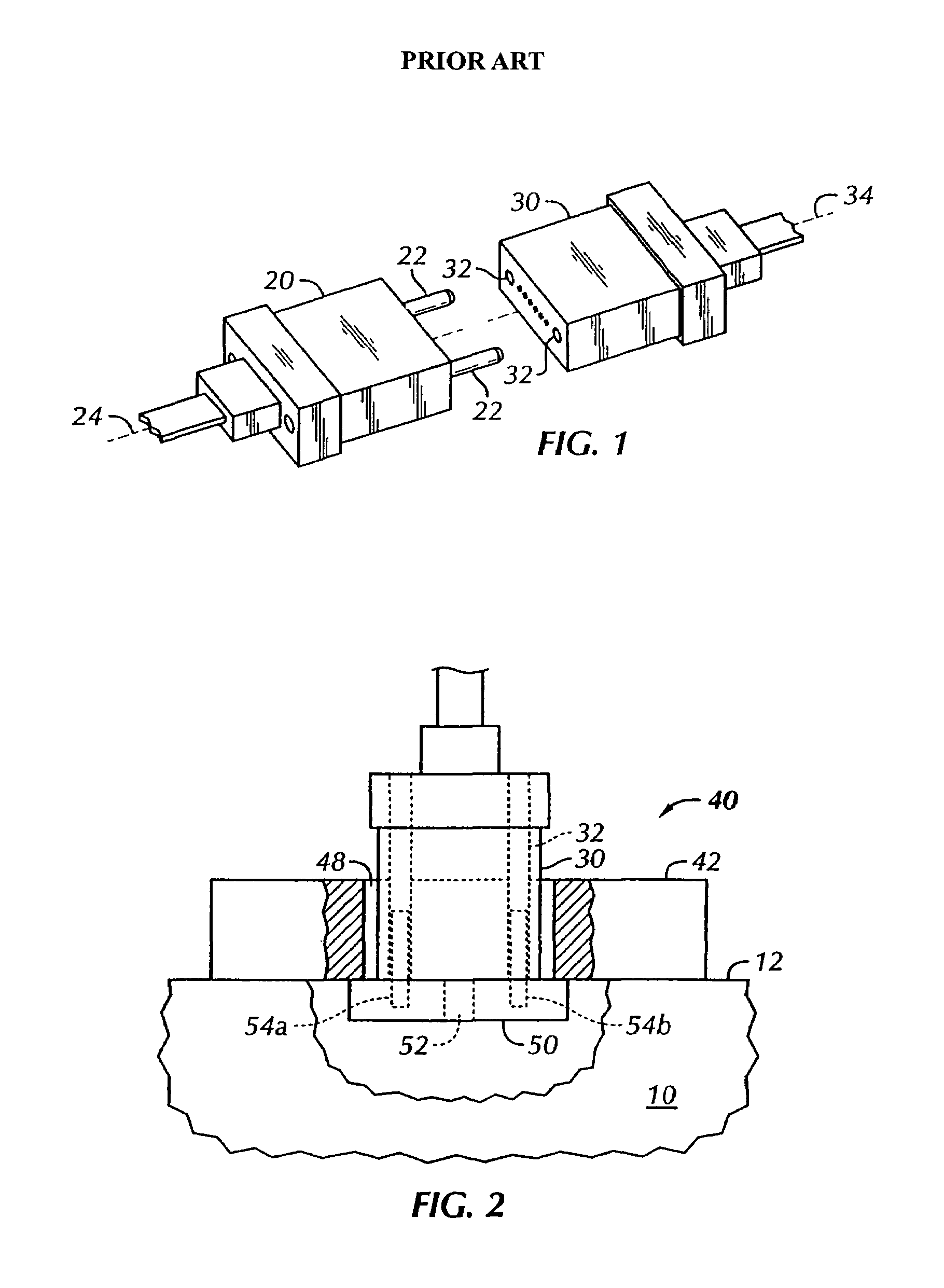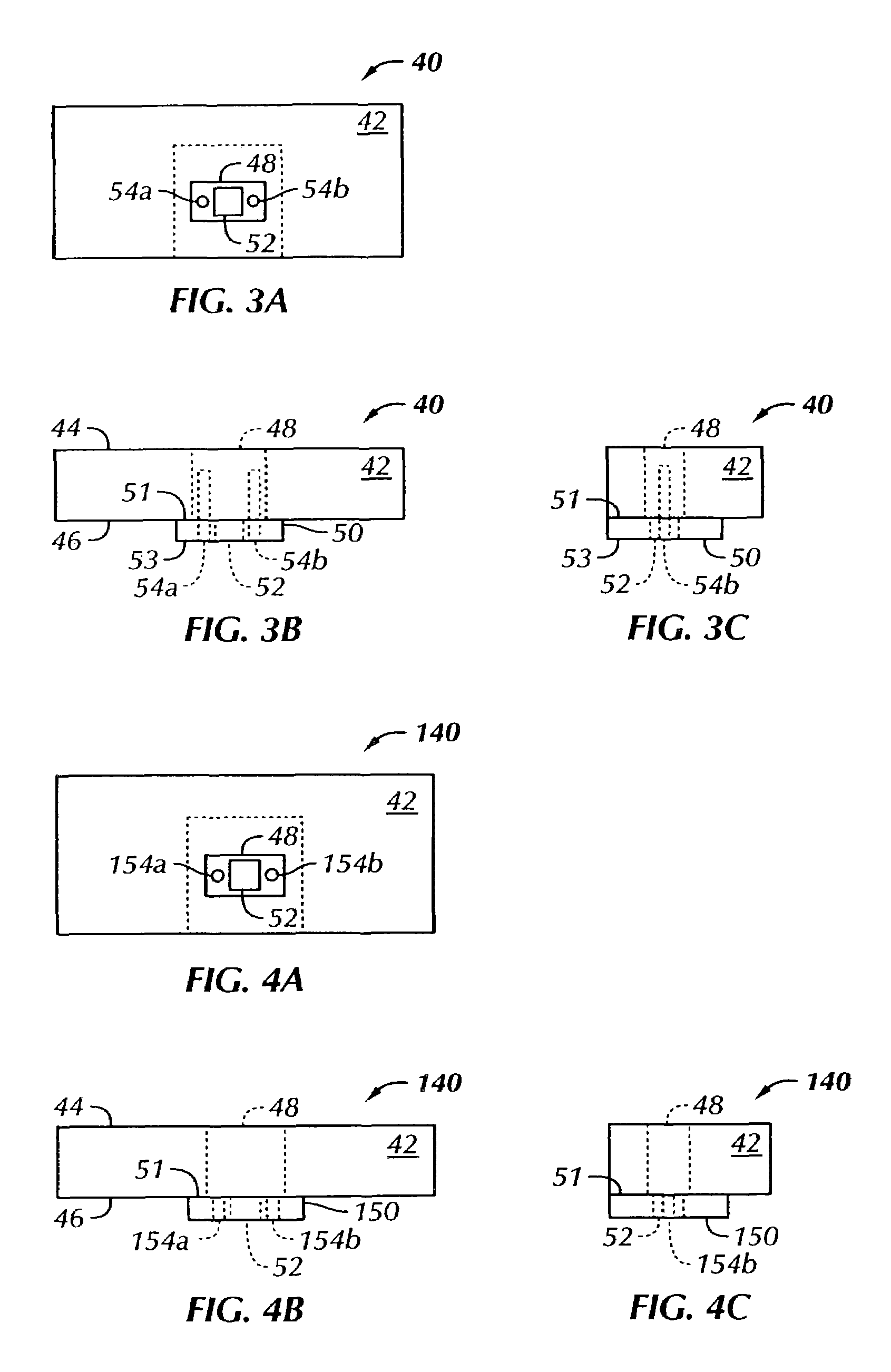Interferometric microscope fixture and method of use
a microscope fixture and microscope technology, applied in the field of interferometric microscope fixtures and methods of use, can solve the problems of affecting the ability of the connector to form a stable connection when intermated, the fiber end gap is the error, and the quality of the signal deterioration, so as to achieve accurate and precise measurements of the dimensional characteristics of the optical fiber connector
- Summary
- Abstract
- Description
- Claims
- Application Information
AI Technical Summary
Benefits of technology
Problems solved by technology
Method used
Image
Examples
Embodiment Construction
[0026]Certain terminology is used in the following description for convenience only and is not limiting. The words “right”, “left”, “top”, and “bottom” designate directions in the drawings to which reference is made. The words “inwardly” and “outwardly” refer to directions toward and away from, respectively, the geometric center of the fixture and designated parts thereof. The terminology includes the words above specifically mentioned, derivatives thereof and words of similar import.
[0027]Referring to FIGS. 1–3, there is shown a first preferred embodiment of a fixture 40 in accordance with the present invention. The fixture 40 is used in combination with an interferometric microscope 10 to hold a female multi-fiber optical connector 30. As shown in FIG. 1, and as discussed above, it is known in the art to provide male and female multi-fiber optical connectors 20, 30, respectively. The male connector 20 is typically provided with a pair of guide pins 22. The female connector 30 is p...
PUM
| Property | Measurement | Unit |
|---|---|---|
| length | aaaaa | aaaaa |
| length | aaaaa | aaaaa |
| end face angle | aaaaa | aaaaa |
Abstract
Description
Claims
Application Information
 Login to View More
Login to View More - R&D
- Intellectual Property
- Life Sciences
- Materials
- Tech Scout
- Unparalleled Data Quality
- Higher Quality Content
- 60% Fewer Hallucinations
Browse by: Latest US Patents, China's latest patents, Technical Efficacy Thesaurus, Application Domain, Technology Topic, Popular Technical Reports.
© 2025 PatSnap. All rights reserved.Legal|Privacy policy|Modern Slavery Act Transparency Statement|Sitemap|About US| Contact US: help@patsnap.com



